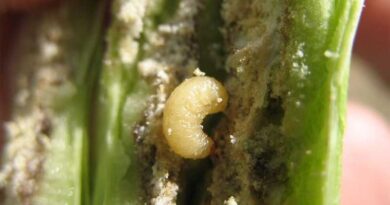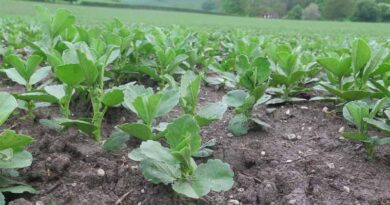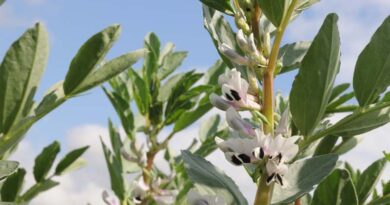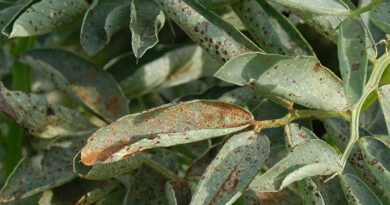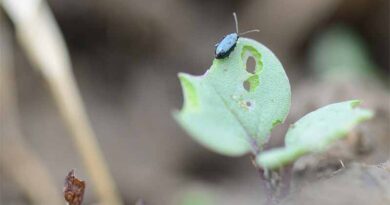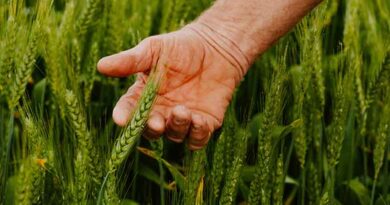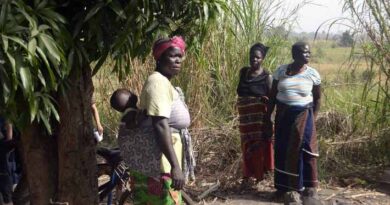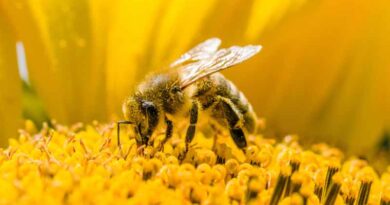Pulse pest issues hot up
20 January 2021, UK: Bruchid beetle activity hots up as temperatures increase; two days above 20C and egg laying starts in earnest. Effective treatment has to target adults before egg laying
Climate change is impacting on pest issues for pulse growers, who need to adapt both monitoring and control strategies accordingly.
Speakers at this year’s on-line PGRO Syngenta Pulse Roadshow meetings highlighted some of the challenges and solutions available to growers and agronomists for the coming season.
Also Read: FAO pledges intensified action to end child labour in agriculture
Syngenta Technical Manager, Dr Max Newbert, reported that high temperatures for the past two seasons have triggered so many repeated high risk alert warnings on the BruchidCast pest forecasting service that it no longer offered a practical advice tool for growers. As such, it will no longer be available for 2021 onwards.

“The warning model remains accurate and relevant, but the pest pressure is just so intense over the prolonged period that growers would be better advised to make their own decisions based on local situation and their own crop markets,” he advised.
Dr Newbert added that growers need to make a commercial decision on whether the investment in a full season bruchid beetle control strategy could be justified by the limited potential premium for human consumption beans. Some may opt for a less intensive approach to simply maintain yield, he suggested.
“Growers also need to be aware that thiacloprid is no longer available for bruchid in beans. So the option is limited to contact activity to control adults before egg laying is even more important – where timing is crucial to get ahead of problems.”
Missed the PGRO Syngenta Roadshow 2021? Catch up and watch here
IPM strategies
PGRO Technical Advisor, Dr Becky Howard supported the decision to stop the BruchidCast service and the difficulties for growers relying on insecticide controls against the intense pest populations. However, preliminary results of a trap cropping research project have indicated potential as a future integrated pest management tool to reduce pressure, she reported.

Where areas of beans were sown early, they appeared to attract the main beetle activity, leaving later sown areas with 40 – 50% reduced larvae damage. Further work will investigate the use of trap crop areas containing other legume hosts to help manage both bruchids and pea and bean weevils, along with pheromone and plant volatile lures to attract pests into the trap area and out of the main cropped area.
Pea moth take flight
Warmer temperatures have also altered the timing threat from pea moth, warned Dr Howard. Where adult moth emergence had typically been seen around the end of May, pheromone traps placed out at the beginning of the month caught moth in high numbers straight away last year.
“We would advocate growers start monitoring for moth at least a month earlier than may have traditionally been the case.”
She added that the Growing Degree Day model operated by PGRO to predict spray timing remained just as accurate, but with higher temperatures the interval from egg laying to larvae hatch may typically be shorter.

“The model will accurately predict exactly when you need to spray to get the best effect,” she advised.
Dr Max Newbert pointed out that the highly systemic Syngenta diamide insecticide, Minecto One, has a label approval for pea moth larvae in vining peas. Furthermore, in-field experience has shown it also offers incidental control of many sucking pests, such as pea aphid, at the same time.

The work had shown good effect on some other aphid and pest species, including peach potato aphid (Myzus persicae), mealy cabbage aphid and brassica leaf miner. “In brassica crops it is imperative to add a mineral oil adjuvant to get uptake into the leaf to target sucking pests. That may also be a useful technique in peas if plants have developed a waxy leaf surface,” he advocated.
Bean seed fly spread
Along with the extended season for pea moth activity, bean growers should also be aware of the increasing numbers and spread of bean seed fly, according to Dr Howard. Previously only considered a pest on high organic matter soils, it has now been seen as an issue on lower organic matter fields.
In some areas, such as Yorkshire, growers had been experiencing up to 50% seedling losses, with very limited success from resowing.
New plant volatile traps do offer a potential to identify periods of greatest danger from fly activity, she reported.
Initial results from PGRO trials, in conjunction with AHDB, have indicated potential to leave an extended period between cultivations and drilling to reduce bean seed fly egg laying. “A gap of at least three weeks had shown to offer significant reduction in pest damage. That might suggest ploughing in the autumn and sowing in the spring may offer a useful benefit,” she suggested.



